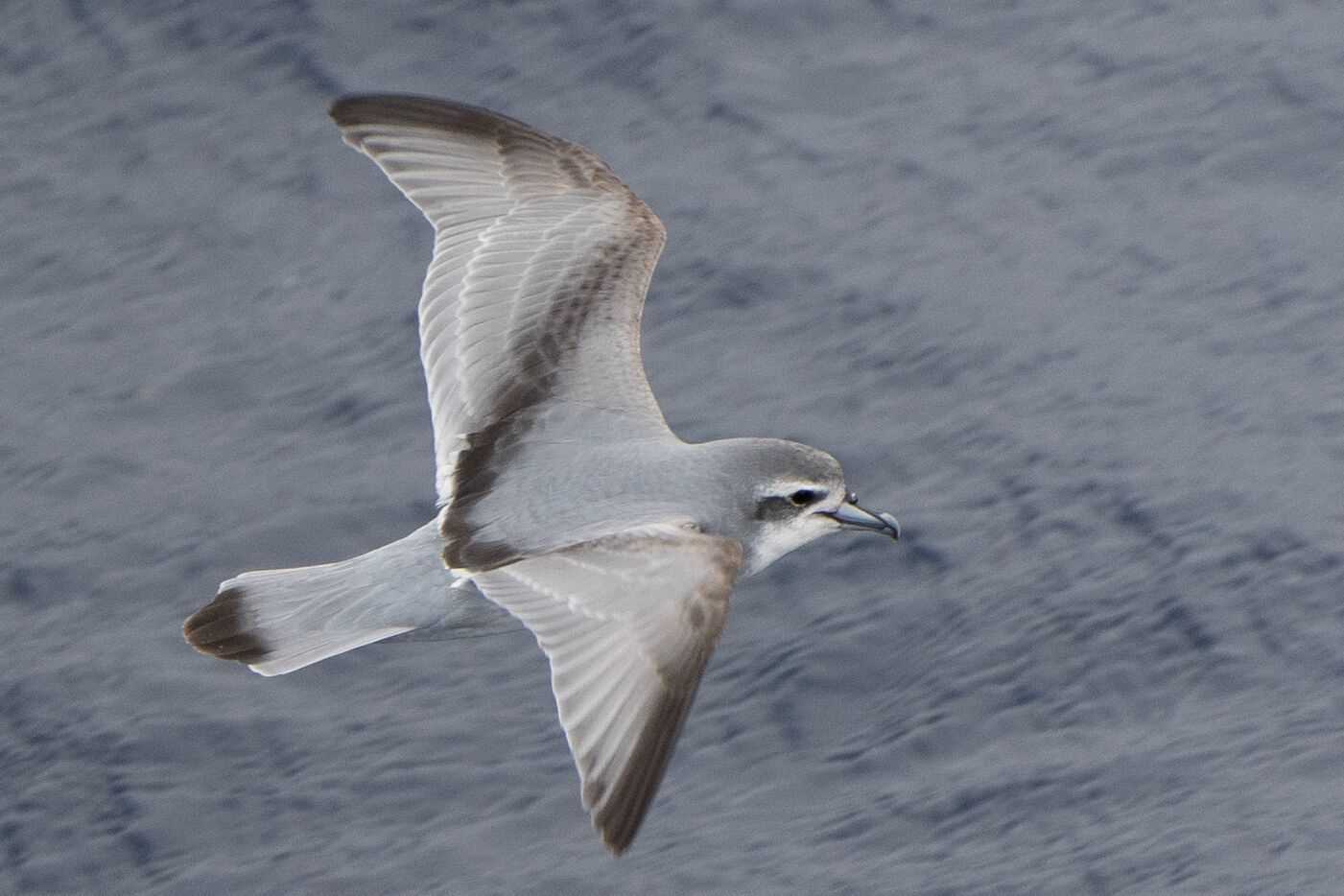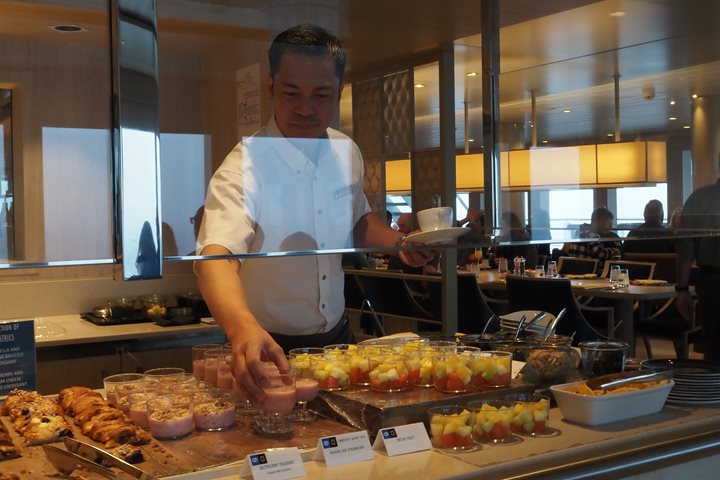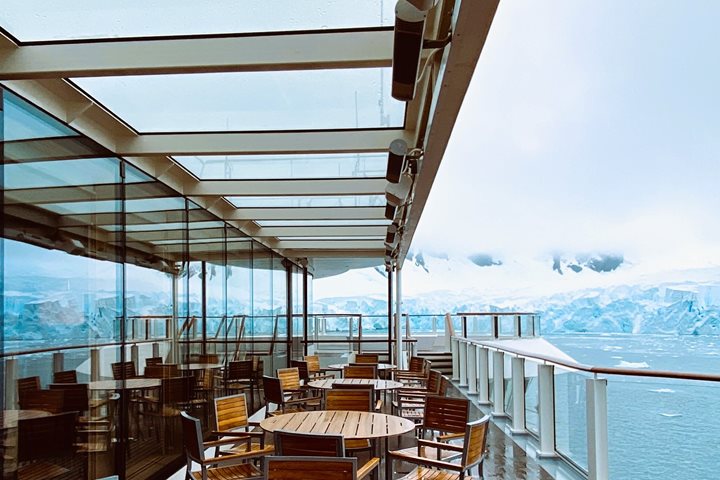Please Note: This expedition crosses the International Date Line, so there will be two DERs for February 5.
Fog hung low over the rolling waves this morning. The number of seabirds has started to dwindle following our departure from the Subantarctic Islands. We have been extremely lucky with the weather and wind so far on our journey south. We had a day full of relaxation, lectures, and ice cream.
Naturalist Jamie Coleman started the day’s lectures with a broad overview of the Southern Ocean’s most iconic bird, the penguin. Jamie covered everything from brood pouch temperatures to population trends and vision. This lecture was particularly insightful, as Jamie spent several seasons working with seabirds on the Island of South Georgia. He had many firsthand stories to share. After Jamie’s penguin talk, naturalist Emmet Clarkin was up next to enlighten us on the kelps of the Southern Ocean. Kelp is arguably not as charismatic as the penguins that swim through it. However, Emmet gets just as excited when he discusses macroalgal rafts as Jamie gets when he talks about king penguins. Both species are incredibly important to the ecosystem in the Southern Ocean. Perhaps a good sea day endeavor would be a debate between naturalists as to which is more important. I digress…
After lunch, those of us who didn’t overdo it on dessert joined wellness specialist Lola in the sanctuary for afternoon stretches. And then, for the stretched and digested, it was time for ice cream! The hotel department put out quite the spread for our afternoon Ice Cream Social.
As the afternoon wound down, we had a final lecture about what nobody would argue is the keystone species in the Antarctic: Antarctic krill. This presentation was given by naturalist Katya Uriupova, who has extensive experience working on scientific projects that revolve around climate change in the polar regions.
Perhaps the biggest event of the day was our crossing over of the Antarctic Convergence. We may still be far from the Antarctic continent, but we have entered the Antarctic biologically and oceanographically. We have crossed into the convergence and the Antarctic Circumpolar Current. The water temperature has dropped to nearly 0 degrees Celsius. These cold, productive waters are the summer foraging grounds for the largest mammals on the planet. For the next two days, we will be on the lookout for fin, blue, humpback, and many other kinds of cetaceans that spend time foraging here. Every minute, we are getting that much closer to the Antarctic continent. The king penguin and albatross sightings from today will decline from here and soon be replaced by Adelie and, if we are lucky, emperor penguins.









